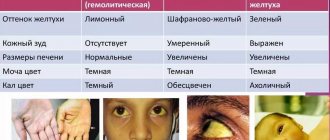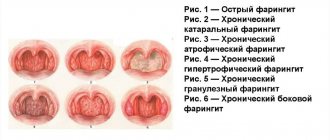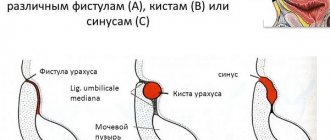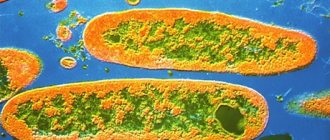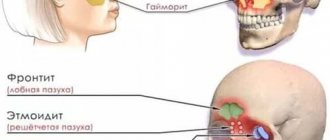Cold allergy is one of many types of negative responses of the body to various external stimuli. The very name of this allergy suggests that an allergic reaction occurs under the influence of cold temperatures.
Until recently, medicine rejected such a diagnosis, since there is no allergen that provokes a specific reaction of the body as such, there is only a physical effect - cold. No allergen means no allergies.
But when exposed to cold air, some sensitive people experience a significant release of histamine, which causes reactions similar to other types of allergies - the development of swelling, vasodilation, redness and itching of the skin and mucous membranes. This is a response to a decrease in the temperature of the skin's thermal receptors.
Causes of allergies to cold
Many residents do not know the disease as cold allergy, but it is not uncommon. This allergy is not contagious and very rarely becomes chronic, but it is still important to promptly detect the causes of this manifestation.
Main reasons:
- Disruption of the functions of skin cells that are very close to the surface of the skin. The main reason for such changes may be a decrease in the body’s protective functions, which provokes not only cold allergies, but also an increased risk of infections and diseases for the body;
- Eating cold food or exposure to low temperatures on the skin - this can be wind, rain, snow, frost;
- Sudden movement from a warm room to a cold one;
- Frequent interaction with cold water - when washing dishes, doing laundry, swimming in cold water and other situations;
- Severe stress - most often people who suffer from cold allergies are those who are constantly exposed to stress, depression, and suffer from frequent decreases in the strength of the immune system.
Factors that provoke the development of cold allergies
There are several groups of factors that can provoke allergies to exposure to low temperatures.
These include:
- Tendency to allergic reactions of various origins: plant;
- household;
- food;
- medicinal;
Diagnostic methods
In order to begin the diagnostic process, after detecting symptoms, the patient must contact a general practitioner, who will refer to an immunologist or allergist.
An important part of the examination is differential diagnosis. It is not always easy to determine whether an allergic reaction is actually due to exposure to cold temperatures. That is, skin irritation due to wind, or even an allergy to fur that comes into contact with the body, can be mistaken for a cold allergy from frosty air.
The same applies to allergies that appear after contact with cold water. It is important to know for sure that the body reacts to low temperature, and not to soap, dishwashing liquid or the chemical composition of the water itself.
There is a reason to differentiate cold allergies from other diseases, for example:
- atopic dermatitis;
- neurodermatitis;
- dermatosis
| This is what hives looks like |
Typically, a test that has proven itself to be as reliable as possible is used for diagnosis. It is called a “cold test” and is performed using a regular ice cube, which must be applied to the skin for 2-3 minutes. If after this cold allergy symptoms appear, the diagnosis can be considered proven.
It is also mandatory to conduct a clinical blood test to study the leukocyte formula, the indicators of which change during allergic reactions.
How does an allergy to cold manifest itself?
Cold allergies in both adults and children are manifested by the following symptoms:
- The appearance of blisters, a red or pink rash;
- Itching or burning;
- Swelling of the hands or areas of skin that have been exposed to cold;
- Swelling of the lips if cold food or drinks were consumed;
- sneezing or runny nose;
- Weakness or dizziness;
- Heaviness when inhaling or exhaling.
You should take symptoms such as tachycardia, vomiting, and fever very seriously. This may be a sign of the first serious complications of an allergy.
Main locations of rashes:
- On the hands and feet —the hands and feet may become red, blistered, or rough. Areas of skin itch, itch, and may cause pain. It is necessary to remove symptoms with medications. In the future, think about warming your hands while in the cold or reducing contact with cool water and objects. Be sure to take the necessary preventive measures;
- On the face - the face is the least protected area of the skin. If the skin reacts quickly to cold, redness, peeling, papules, and ulcers may appear. The skin begins to itch. In such situations, the best treatment is timely prevention. This is especially true for the skin of young children.
Photo of what an allergy to cold looks like:
What causes cold urticaria?
In most all cases, the reason why an allergy to cold appeared cannot be established. Most patients feel improvement over time.
Sometimes cold urticaria is caused by immune problems, sometimes it can be caused by an infectious disease or respiratory infection. Therefore, if you see symptoms of the disease, it is better to immediately consult a doctor.
There are also cases when cold allergies are associated with hemoglobinuria. This case requires urgent evaluation by a specialist.
Stages of cold allergy manifestation
Medicine knows 3 main stages of the disease:
- Stage 1 - immunological. It is a reflex of the body to exposure to low temperatures. The process is accompanied by the release of antibodies;
- Stage 2 - under the influence of special chemicals - heparin, histamine, serotonin, the skin becomes red and the blood vessels dilate;
- Stage 3 - it is characterized by serious symptoms: swelling of the skin, large areas with a rash or blisters, anaphylactic shock is possible.
The first stage of the disease is practically imperceptible to the human body.
Types of cold allergies
Doctors call several types of cold allergies, each of them has its own symptoms and characteristics:
- An allergy of acute or chronic form - the following symptoms are typical for it: itching of all areas of the skin that were exposed to cold, swelling in the form of blisters, redness that looks like stinging nettles. Weakness, pain in the muscles, and irregular heartbeat are also possible. This type of urticaria can appear from several weeks until the end of the cold period.
- Recurrent allergies most often occur from early autumn to mid-spring. But there may be exacerbations in different seasons, depending on temperature changes.
- Reflex cold therapy - when the entire body is exposed to cold, rashes may appear in only one area.
- Familial urticaria - the first symptoms appear 25 hours after cold exposure. In addition to fever, chills, and a spotty rash, itching and burning are possible.
- Erythema is the appearance of redness of the skin after exposure to cold. The affected skin may be sore.
- Dermatitis provoked by the influence of low temperatures is characterized by itching and roughness of the skin. In severe situations, swelling of the entire body may occur.
- Cold rhinitis is often confused with simple nasal congestion or the onset of ARVI. But with cold rhinitis, congestion appears only in the cold. In warmth, such symptoms disappear.
- Cold conjunctivitis - manifests itself as pain or lacrimation in the cold or cold.
Causes of cold type allergies
In people who are sensitive to temperature changes and suffer from cold allergies, frosty air causes an effect on mast cells.
These cells are located on the surface of the skin. They give a signal, and a reaction occurs, accompanied by the release of histamine. The body, experiencing an excess of the above-mentioned hormone, responds with an allergic reaction.
People who are sensitive to weather changes should think about what the body’s reaction to a drop in ambient temperature is and what treatment is required.
There is a high probability that a disease is hidden in some part of the body, the development of which a person may not be aware of.
Eliminating the symptoms of a cold reaction is not enough. It is recommended to get rid of the root cause of the disease.
The main causes of cold-type allergies that can lead to complications are the following factors:
- chronic pathologies that a person has suffered from for a long time: sinusitis, sinusitis, caries or tonsillitis;
- disruptions in the functioning of the endocrine system;
- weakening of the immune system is often provoked by the presence of helminths in the human body;
- kidney pathologies, diseases of the gastrointestinal tract, liver and other organs;
- colds, stress and cancer;
- hereditary predisposition;
- infectious diseases, which include: chickenpox, mumps and pneumonia;
- existing problems with an allergic reaction to external irritants: dust, animal hair or pollen;
- long-term use of medications belonging to the category of antibiotics.
Article on the topic: Allergy to henna for eyebrows - first aid, symptoms and treatment
Rarely, there are precedents in which the above-mentioned type of allergic cold reaction is genetically predisposed. Intolerance to the cold form of allergy sometimes manifests itself in children if one of the parents had similar problems.
The most common type of cold allergy does not occur from cold, but is provoked by windy weather. Its main symptom is not itching, but burning of the skin.
Based on the above factors, it becomes clear that many people are at risk. Therefore, the possibility of acquiring a cold type of allergy cannot be ruled out. Such symptoms require treatment.
Predisposing factors for allergies are sometimes trivial changes in temperature conditions. For example, a person moves from one room to another or goes outside.
The release of histamine can be triggered by contact with supercooled water. This situation can occur when leaving the pool or while swimming in open water. Some people have trouble washing dirty dishes every day.
How to determine cold allergy?
Cold allergies are not always diagnosed the first time, since the symptoms may be identical to other diseases, such as colds or allergic manifestations, which are triggered by other factors.
You can diagnose an allergy to cold at home. Methods for determining the disease depend on the type of urticaria or its severity.
The main diagnostic method is the ice chip test. It is applied to the skin area for 12-15 minutes, after which it is removed. If there is redness or other changes in the skin, the test can be considered positive.
In chronic or familial allergies, such tests may be inconclusive, so it is better to undergo clinical tests for antibodies to cold. The study will require the patient's blood serum.
Symptoms and signs
The symptomatic picture appears immediately after interaction with the stimulus, that is, with a low temperature.
It is necessary to differentiate cold allergies from irritation arising from the wind or components included in the cold liquid.
Like any immune reaction, cold allergies are accompanied by a deterioration in general health and shortness of breath. There is often a persistent decrease in blood pressure, which, in turn, can cause headaches, drowsiness, and decreased performance.
Local signs of an allergic reaction to cold are expressed in the appearance of a rash that itches and itches. It usually has a pronounced pink tint and looks like hives. It can be localized in areas that are more susceptible to direct contact with low temperatures - hands, face. Or form in places with thin sensitive skin, for example, on the elbows or inner thighs.
Pathologies can also be accompanied by inflammation of the mucous membrane of the nose and eyes.
How to treat allergies to cold in adults?
Of course, after a diagnosis has been made, you need to choose an effective course of treatment and quickly relieve the symptoms.
Before you start taking medications or using folk remedies, you need to pay attention to factors that can speed up recovery:
- Be sure to wear warm clothing when going outside in winter weather or while staying in an unheated room. People who are allergic to cold need to think not about fashion, but about comfort and warmth.
- 35 minutes before going outside at low temperatures, do not forget to use a moisturizer or nourishing cream on exposed skin. Don't forget about lip balm.
- Before visiting the street, drink a drink that can warm you up . This could be tea, coffee, but not drinks with alcohol.
- Pay attention to strengthening the body and a more balanced diet.
Drug therapy
There are dozens of medications for cold allergies, both for internal and external use.
The type of drug therapy depends on the symptoms and their severity. After the first sensations of cold allergies, be sure to warm yourself up with warm tea, and if possible, wrap yourself in a warm blanket.
For swelling and itching, use antihistamine ointments to relieve the condition. Such products will also speed up the healing of damaged areas. If the cold causes irritation of the mucous membranes of the nose or eyes, apply drops before going out.
Internal preparations:
- Zyrtec - recommended for the treatment of all types of allergies (year-round or seasonal). It is especially effective for symptoms such as lacrimation, nasal congestion, fever, and rashes. Can be used by adults and children from 6 months. Dosage depends on age. The average dose for adults is 10 mg per day;
- Cetirizine - tablets are used at the first manifestations of rhinitis or conjunctivitis, which are triggered by allergies, urticaria, itching, swelling. Can be used from 6 years of age (recommended weight of at least 30 kg). Use with special attention for elderly people. The average dosage for adults is 1 tablet – 1 time per day. It is not advisable to use during pregnancy and breastfeeding;
- Tavegil is prescribed for allergic rhinopathies, urticaria, eczema and dermatoses of various types. Can be used if you are allergic to medication or insect bites. Release forms: tablets and injection solutions. Can be treated with the product in adults and children from 6 years of age. Dose for adults – 1 tablet 2 times a day (preferably before and after sleep). In severe conditions, it is possible to increase the dose to 6 tablets (6 mg) per day;
- Suprastin is recommended to be taken for urticaria of various types, allergic rhinitis, conjunctivitis and dermatitis of various origins. Can be used to eliminate atopic dermatitis, eczema, allergies to medications and insect bites. May be a preventative against Quincke's edema. It is not advisable to use by pregnant and lactating women and children under 3 years of age. Dosage for adults – 1 tablet 3-4 times a day;
- Cetrin - its use is allowed from 2 years of age (in the form of syrup) and in the form of tablets (from 6 years). Recommended for the treatment of rhinitis of any kind, relieving symptoms of allergies, urticaria, dermatoses. Can be used as a preventative against allergies (seasonal, periodic and chronic). Do not use during pregnancy and breastfeeding. Taking the medicine does not depend on food intake; it is advisable to take it before bedtime. The average dosage for adults is 1-2 tablets throughout the day;
- Parlazin - eliminates symptoms of allergies of various origins, rhinitis, allergic conjunctivitis, urticaria, dermatoses. Used as a prophylactic against swelling due to cold allergies. Can be used from 6 months of age. The average dosage of antihistamine drops for an adult is 20 drops per day;
- Allergodil is an antihistamine spray against conjunctivitis that is used to relieve symptoms. Relevant for the treatment of both seasonal and year-round diseases. Before treatment, be sure to study the list of contraindications and side effects. The spray bottle is designed so that 1 required dose of medication is released at a time. Used from 4 years of age.
Zyrtec
Cetirizine
Tavegil
Suprastin
Tsetrin
Parlazin
Allergodil
Preparations for external use:
- Skin Cap - used for eczema, dermatitis and urticaria of any origin. The drug is available in the form of an aerosol. Use it to treat the affected areas of the skin at least 2 times a day until the desired result is achieved. Can also be used for children over 3 years of age;
- Gistan N - the product is used to treat the affected areas for any form of dermatosis, psoriasis, and urticaria. Apply a thin layer to the skin no more than once a day; it is a hormonal drug. The course of treatment should not be longer than a month. Use for children only if there is no analogue;
- La Cree - removes severe symptoms of cold allergies: removes inflammatory areas, peeling, dryness, redness. In addition, it can be used for 2-3 days as a skin care product after allergy symptoms have been relieved.
Skin Cap
Gistan N
La Cree
Treatment with folk remedies
Traditional methods are very popular in the fight against cold allergies. But both adults and children need to be careful about such treatment. Abuse of them can have a negative impact on health.
Top 5 most popular ways to combat cold allergies:
- Badger fat not only removes flaking, redness, relieves itching, but also, thanks to the vitamins and minerals in its composition, helps strengthen the immune system, which can become a prophylactic agent in the future;
- Dissolve 1.5 tablespoons of honey in 250 ml of warm water . This drink will help relieve itching and significantly reduce swelling;
- A mixture of onion juice, honey and lemon juice (1:1:1) will help get rid of rashes, reduce itching and flaking of the affected areas of the skin;
- A decoction that removes allergic rashes . Valerian rhizomes, lemon balm leaves, and hop cones are used in equal proportions (25 g each). All components are crushed and 250 ml of boiling water is poured. The mixture is infused and filtered. Drink the finished drink before meals, 70 ml. 3 times a day;
- Yarrow decoction . 1.5 tbsp. l. pour 250 ml of boiling water over the herbs and simmer for at least an hour. After this, strain and take 70 ml 3-4 times a day before meals. In addition to the fact that this drink has antihistamine properties, it regulates blood circulation and serves as a pain reliever. In addition, it relieves itching.
Allergy to cold in children
In children, the causes of cold allergies may be the same as in adults. But the main provoking factor remains the effect of low temperatures on exposed skin.
How to treat allergies to cold in children?
When the type of allergy is diagnosed, you need to start treatment prescribed by the doctor.
It is important to remember that more effective results can be achieved if you do everything comprehensively:
- Relieve allergy symptoms at each manifestation using selected medications and traditional methods;
- Takes maximum care of insulating the baby when going outside;
- Use baby creams that will reduce the negative effects on delicate skin;
- Use sorbents to cleanse the body of allergens. If there are disturbances in the gastrointestinal tract, take a course of probiotics;
- To pierce the body and increase the body's defenses;
- Use decoctions of burdock, cones, calendula and string, chamomile for baths . This must be done with caution. Use such methods only if the child does not have an allergic reaction.
Medicines and folk remedies to eliminate the disease in young children should be used with special vigilance and only after consultation with a pediatrician or children's allergist.
Internal preparations:
- Zyrtec - sold in the form of tablets and drops. Can be used to treat children from 6 months. Recommended for the treatment of allergic rhinitis, conjunctivitis, dermatoses and the manifestations that accompany them. Dosage depends on age. Children 6 months – 1 year – 5 drops per day. 1-2 years – daily norm – 5 drops – 1-2 times a day. 2-6 years – daily norm – 10 ml;
- Zodak is a remedy recommended for the treatment of any type of urticaria and other allergic reactions. It is produced in the form of drops, tablets or syrup. The tablets can be used for treatment in children from 6 years of age. Dose for a child 6-12 years old – 1 tablet per day. Drops can be used for children from 12 months. Depending on the age and complexity of the disease, the daily dose can range from 5 to 20 drops. The syrup has also been used since the year;
- Suprastin - recommended for urticaria, rhinitis caused by allergies, dermatitis, eczema, allergies after insect bites. It can also be prescribed as a prophylactic agent. In case of severe symptoms, it is allowed to use it from 1 month. The exact dosage of the medicine for children is determined only by a pediatrician or an allergist.
Zyrtec
Zodak Suprastin
Preparations for external use:
- Fenistil gel - applied to the skin for itching eczema, dermatoses, urticaria. Can be used from one month of age up to 2-4 times a day. Apply a thin layer to the skin. Use with caution in the first months of pregnancy and while breastfeeding. In severe situations, the use of the gel can be supplemented with a tablet form to enhance the effect. In rare cases, dry skin may occur as a result of using the ointment;
- Panthenol - helps to quickly heal damaged areas after rashes and peeling in children. It is used not only on the skin, but also on the mucous membranes. Spray or ointment can be used 2-3 times a day;
- Bepanten - the product is used to treat damaged areas, including areas that are susceptible to peeling and inflammation. Recommended for treatment and preventive measures in children from infancy. The ointment is applied as needed. The frequency of application of the product for infants is determined by the doctor.
Fenistil gel
Panthenol
Bepanten
Treatment with folk remedies:
- Blueberry puree is applied as a thin compress to the affected areas for several minutes, after which it is washed off;
- A decoction of crushed raspberry roots - 500 ml of water - 50 grams of roots. Simmer over low heat for about 35 minutes. Then let the liquid cool and strain. It is recommended to drink liquid before going out into the cold, before and after sleep (2-3 tbsp);
- Baths prepared from decoctions of pine branches . It is advisable to bathe your child in such water daily. Additionally, you can apply compresses from the decoction to areas of redness.
Prevention
The immune system is a little-studied part of the body, so it is impossible to name one hundred percent effective methods in the fight against allergies. But it is still possible to minimize the risk of cold allergies.
First of all, you need to ensure that your immune system is able to function normally. To do this, you need to avoid stress, eat a properly balanced diet, and follow a sleep and rest schedule. It is important to be examined to identify foci of chronic infection, which may be chronic tonsillitis, sinusitis, or even caries. Eliminating sources of chronic infection reduces the burden on the immune system so it can resist triggers.
Secondly, hardening can serve as a method to prevent the development of cold allergies. It should be carried out gradually, starting with rubbing with a damp mitten, continuing with a contrast shower, air baths and, finally, dousing with cold water. Thus, the body will be adapted to low temperatures.
If during hardening procedures signs of cold allergies appear, the process must be stopped immediately and consult a doctor.
Preventing cold allergies
Manifestations of cold allergies can be avoided or symptoms can be significantly alleviated if preventive measures are taken.
Procedures and actions that people suffering from this disease should pay attention to:
- 30 minutes before going outside, treat exposed skin with nourishing cream
- In cold air, breathe only through your nose . Do not inhale it through your mouth. Do not moisturize your lips with saliva in the cold. It is better to do this before going out with a special balm;
- Be sure to think about insulation in the winter : warm clothes, shoes, hats, hood, mittens;
- If possible, reduce the time spent in frosty air as much as possible.;
- Hardening and a balanced diet are recommended;
- Timely diagnosis and treatment of infectious diseases.
What to avoid:
- If possible, avoid buying clothes made from synthetics;
- Minimize situations of skin contact with cold objects, air, water;
- Prevent infectious diseases from developing into chronic ones;
- Avoid stressful situations.
Traditional recipes in the fight against cold allergies
Doctors strongly recommend using traditional medicine only as an additional remedy for the treatment of cold allergies. It is important to maintain the correct dosage and proportions to get the maximum effect during therapy. The main recipes for eliminating the symptoms of cold allergies are:
- Blueberry. The berries are ground to a mushy state. A compress is made from the resulting substance. It is applied to areas of the skin where allergy symptoms appear. The substances contained in blueberries will quickly relieve swelling. The main disadvantage of the folk remedy is that the berries turn the skin dark.
- Calendula, celandine, burdock, mint. Medicinal herbs produce a medicinal emulsion that quickly relieves all pain and itching from the skin.
- Birch juice. An effective remedy that should be used to treat cold allergies in children and adults.
- Lemon juice. You need to moisten a cotton pad in it, and then treat the skin that has an unpleasant itching sensation after a long stay in the cold.
Important! Before using any folk recipe, you should consult your doctor. Only a qualified specialist will be able to determine exactly how to properly treat cold allergies so as not to harm the general condition of the body.
